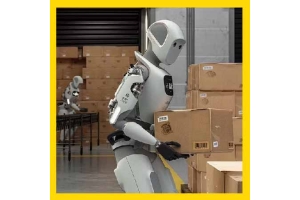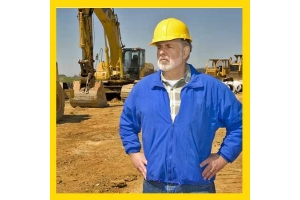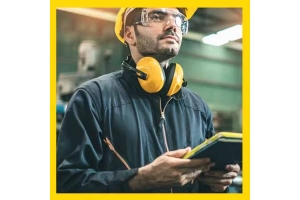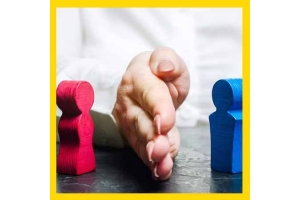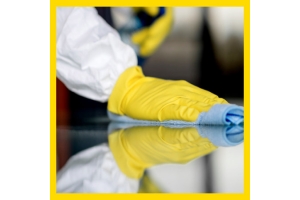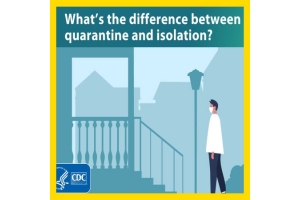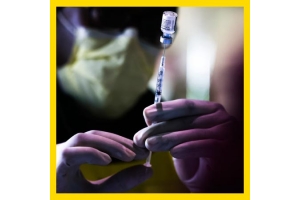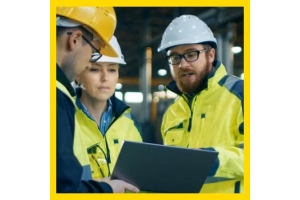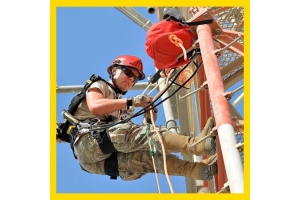Currency
-
October 29, 2017
Flame resistant
fabrics are made from materials that are inherently nonflammable - the materials have flame resistance built into their chemical structures. Fabrics made with these types of materials are designed to prevent the spread of fire and will not melt or drip when in close proximity to a flame. Because flame resistant fabrics are not usually made from 100% flame resistant materials, they will burn, but will do so very, very slowly and are often self-extinguishing.
Flame retardant
fabrics are chemically treated to be slow burning or self-extinguishing when exposed to an open flame. These fabrics can be made from any material, but they must be treated with special chemicals to qualify as flame retardant.
The biggest difference between flame resistant and flame retardant fabrics lies in how each is made.
Without -
October 29, 2017With OSHA fine increases of 80 percent taking effect in August 2016, violations for inappropriate or inadequate eyewash and shower equipment have resulted in penalties above $100,000.
-
October 29, 2017When it comes to fire extinguishers, “make sure you know the types, sizes and maintenance requirements of your extinguishers, as well as the basics of extinguisher operation.”
If a fire does break out at work, employees will need to react quickly.
Take it seriously.
Treat every alarm as a real fire emergency – don’t assume it’s a drill.
Call the fire department.
“Never wait to investigate the situation before notifying the fire department,”. “Any delay will allow a fire to grow and further endanger the building occupants and property.”
Be ready with information.
When calling 997, employees should be able to accurately describe the situation and provide the address of the business, as well as the closest cross street. Ensure employees know not to hang up until the 911 dispatcher -
October 29, 2017Workers in construction and extraction occupations were mostly exposed to loud work (49.6 percent of jobs) or very loud work (7.9 percent) in 2016, according to BLS.
Workers in 75.0 percent of U.S. civilian jobs were exposed to moderate noise levels at work during 2016, and another 13.3 percent were exposed to loud noise levels and 0.7 percent to very loud levels, BLS reported, saying the data come from the Occupational Requirements Survey.
Workers in construction and extraction occupations were mostly exposed to loud work (49.6 percent of jobs) or very loud work (7.9 percent), according to the agency, and more than 7 in 10 carpenters and operating engineers and other construction equipment operators were exposed to loud work environments that year.
Food preparation and serving-related occupations also are exposed significantly to noise: 16.5 percent of jobs were exposed -
October 22, 2017Employers must take special precautions to protect workers from heavy smoke.
-
October 22, 2017Recent events worldwide – hurricanes, earthquakes and wildfires – have everyone thinking about emergency response. Is your business prepared if disaster strikes?
-
October 22, 2017Personal protective equipment (PPE) is getting a lot more personal if this sampling of some of the thousands of products on view in Dusseldorf at A+A – the Trade Fair for Safety, Security and Health at Work and the 35th International Congress for Occupational Health and Occupational Medicine, managed by Messe Dusseldorf GmbH are any indication.
A+A 2017's 1,940+ exhibitors had a lot to talk about. Safety glasses that can share workplace and productivity data with employees as they work. Work boots that can "read" the temperature of employees' feet and warm them up or cool them down. The integration of gas monitors and smart phones. A connected safety concept that combines management software, a mobile app and PPE. From prototypes to real life, this personal protective equipment monitors the worker as it protects him or her from injury.
SOURCE:
http://www.ehstoday.com/ppe/aa-2017-future-personal-protective-equipment?NL=OH-05&Issue=OH-05_20171019_OH-05_299&sfvc4enews=42&cl=article_2&utm_rid=CPG03000008089331&utm_campaign=22657&utm_medium=email&elq2=8a3dfc8c6fb94c9aae363d4c3eecdac5 -
October 22, 2017Thorough fall protection requires a culture of safety as well as OSHA-certified fall prevention measures.
-
October 22, 2017Do You Have Questions about Disposable Dust Masks?
-
October 15, 2017Amira Agarib /Dubai
Filed on October 14, 2017 | Last updated on October 14, 2017 at 05.20 pm

